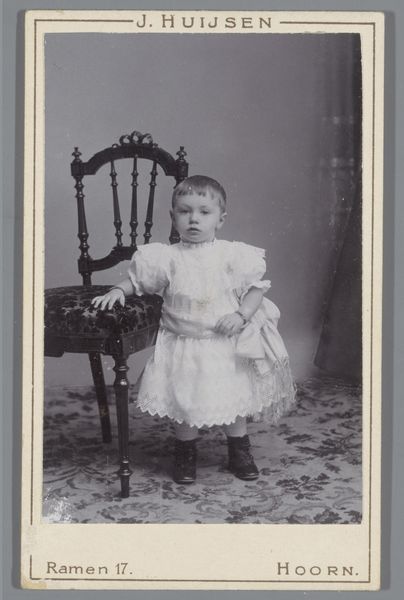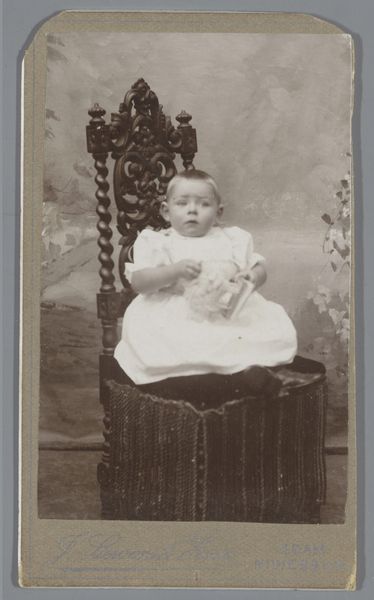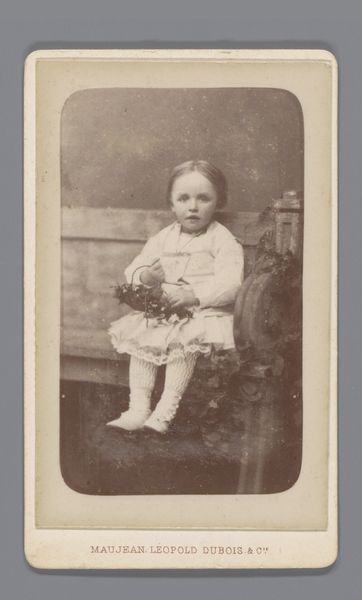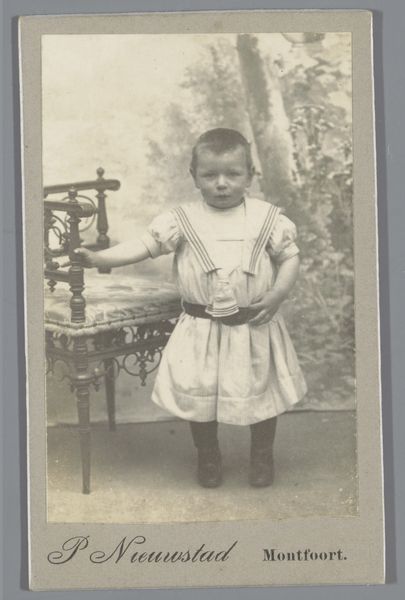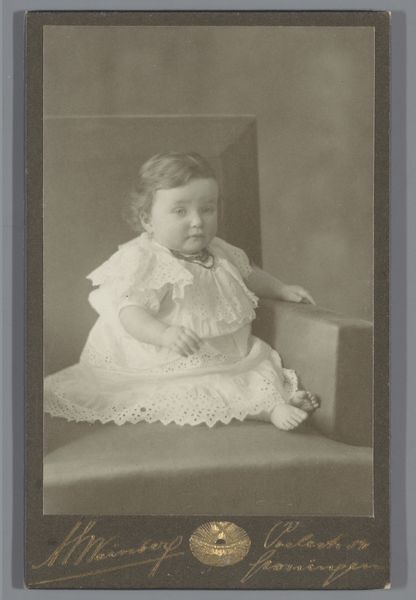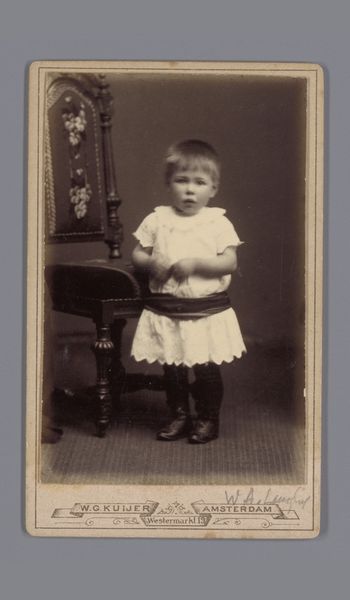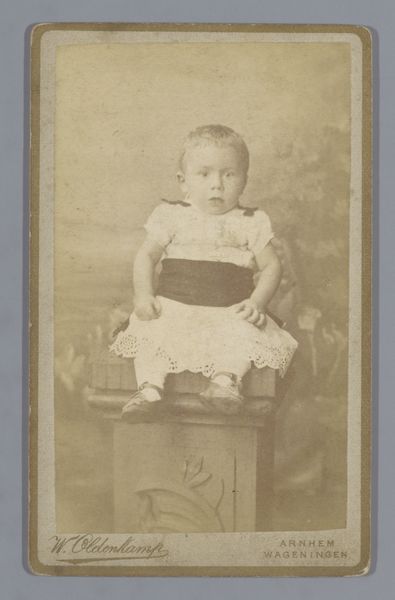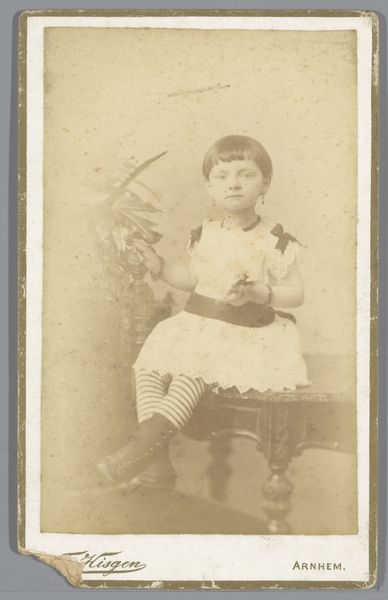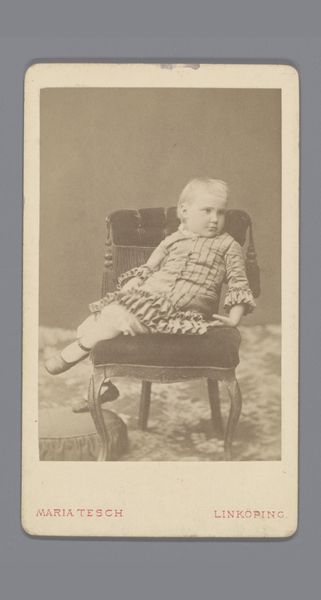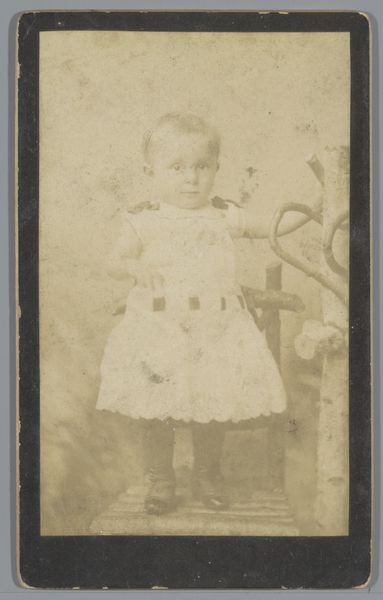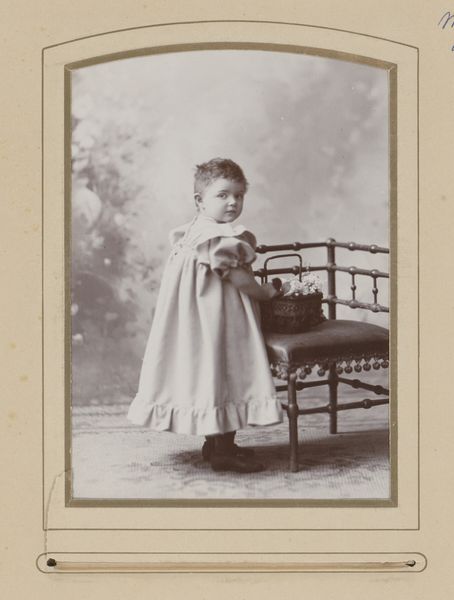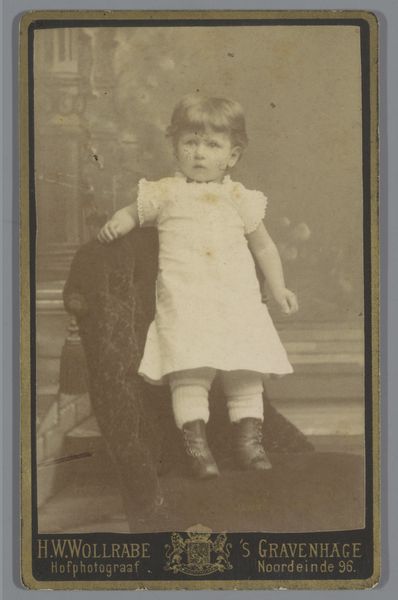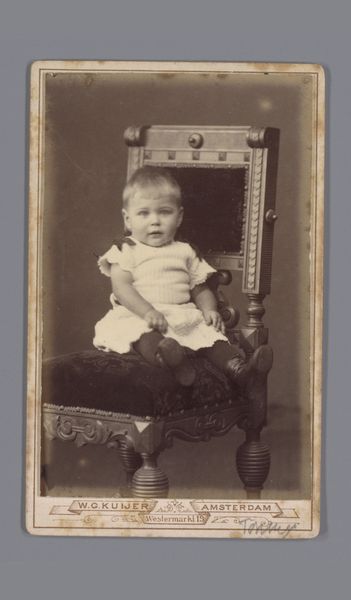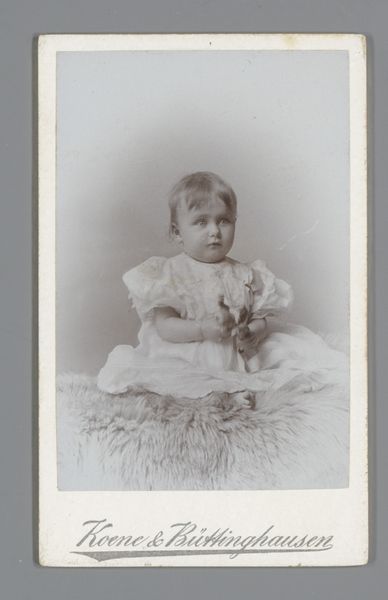
Dimensions: height 102 mm, width 63 mm
Copyright: Rijks Museum: Open Domain
Curator: The neutrality of the background really accentuates the subject here. There’s a tenderness, almost a fragility. Editor: Indeed. What we’re looking at is a gelatin-silver print entitled "Portret van Goverdus Henricus Jonker." Created in 1904, it's a photograph that captures a young boy in a very particular style of dress. Curator: The clothing feels weighty somehow, almost like a costume suppressing the child. Notice the oversized ruff. It frames his face beautifully but in a manner that feels both precious and slightly confining. It almost cocoons the young Jonker. Editor: I'm struck by the deliberate arrangement of the objects. We see not just the boy, but a chair with a decorative patterned seat and what appears to be a toy windmill positioned just so, near the chair. These elements speak to a specific cultural moment and the rise of the studio portrait. Curator: That windmill certainly is more than just a toy. It represents Dutch identity, history, ingenuity…it gives the child context, heritage. Do you think the choice of items for him is random? The photographer probably picked them out, but these images of a child beside a windmill, create a cultural memory that can change its viewers as their heritage gets highlighted through their eyes. Editor: Not at all. This isn't merely a snapshot; it’s a constructed image designed to convey certain ideas about childhood, class, and perhaps even national pride. Photography studios arose to satisfy that burgeoning public appetite. The burgeoning middle class now had access to this kind of portraiture to solidify the rising bourgeoisie identity, too. Curator: It’s poignant. Look how he avoids our gaze! What can that moment of diverted attention mean? He is not simply 'representing' boyhood; rather, that boy presents the very essence of melancholy and youth—there is such innocence here, still undisturbed. Editor: Exactly. These images played a significant role in constructing and circulating ideas about ideal citizens and how they were tied to objects. What can a seemingly simple portrait tell us? I think so much, about both the subject and his world.
Comments
No comments
Be the first to comment and join the conversation on the ultimate creative platform.
